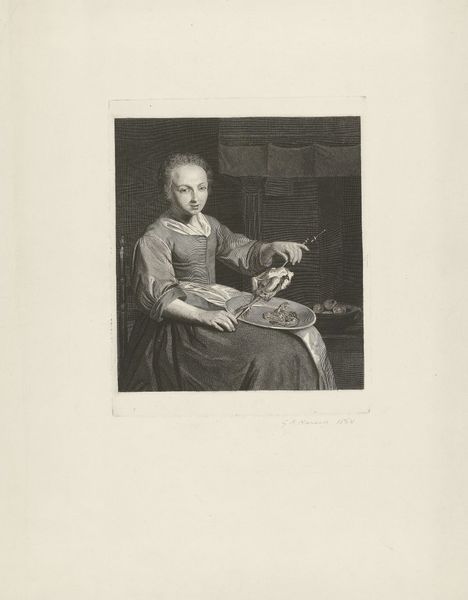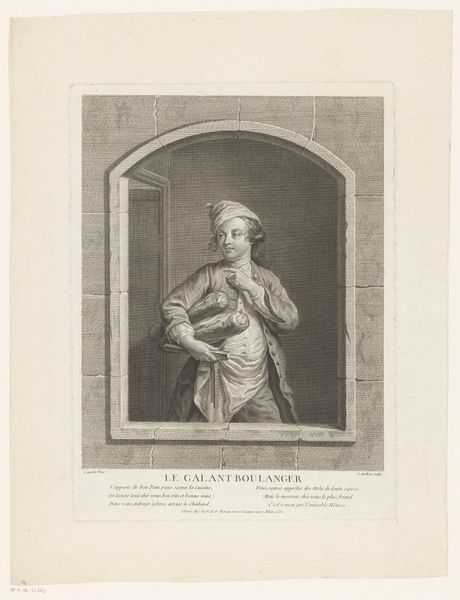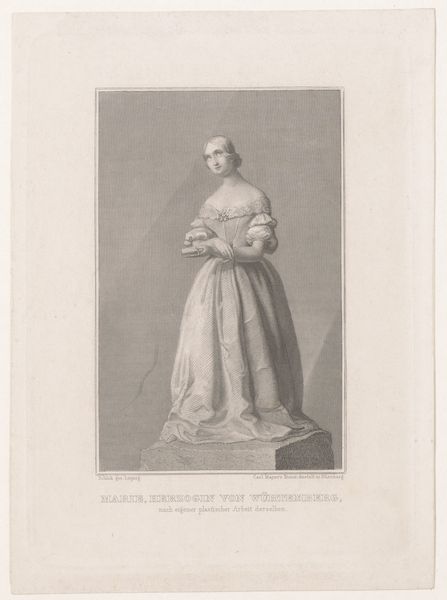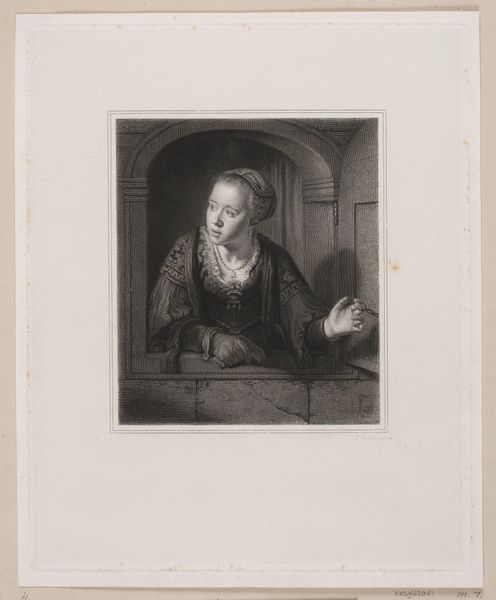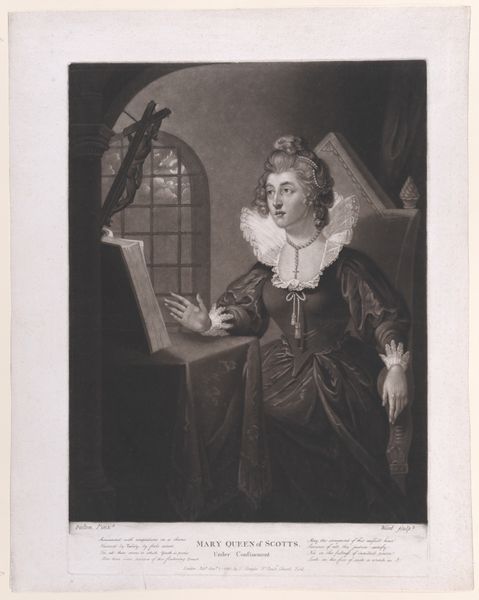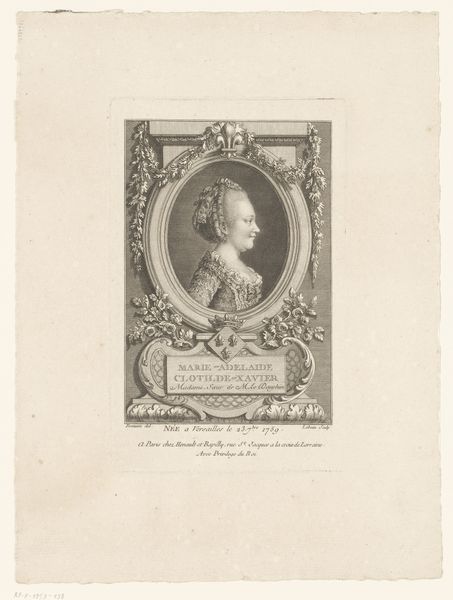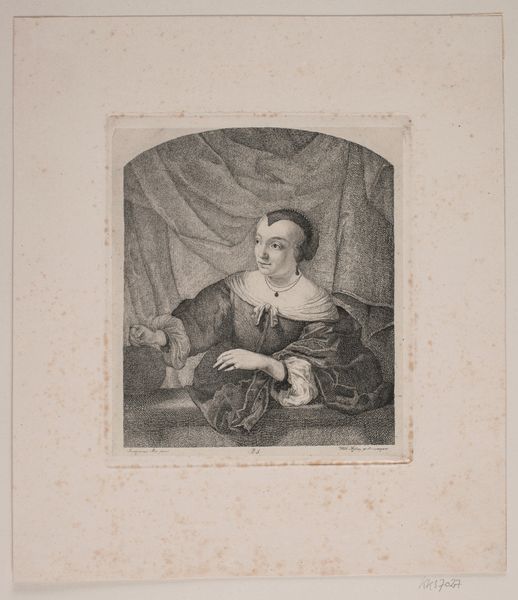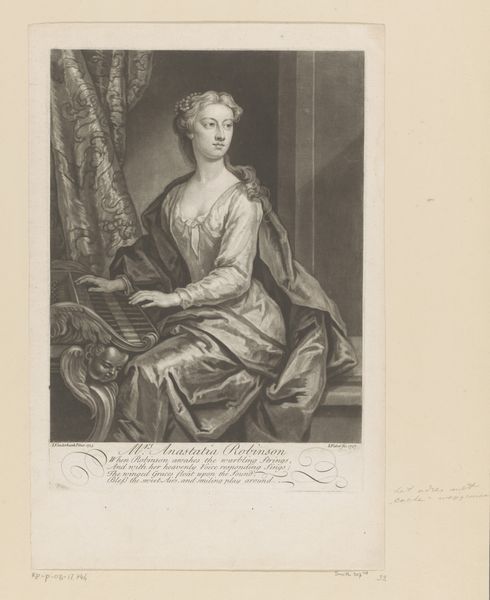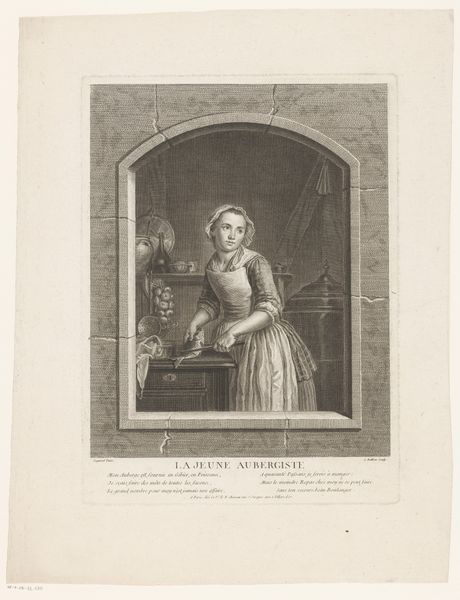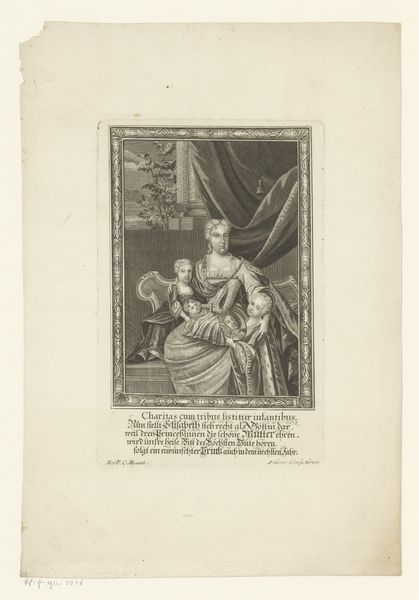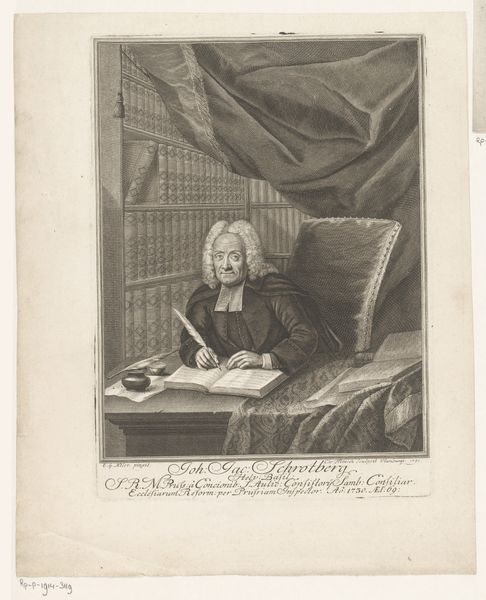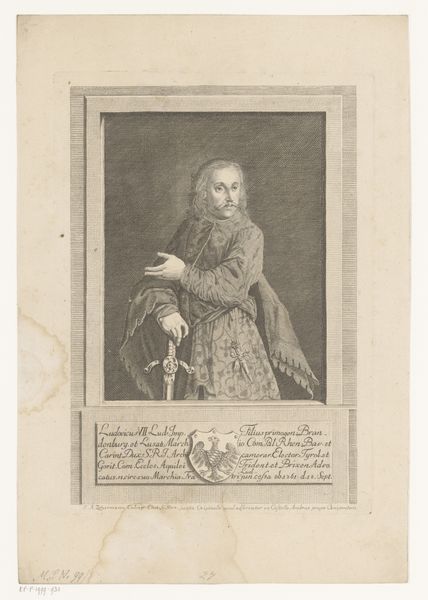
print, engraving
#
portrait
#
neoclacissism
# print
#
old engraving style
#
genre-painting
#
engraving
Dimensions: height 396 mm, width 283 mm
Copyright: Rijks Museum: Open Domain
Editor: So, here we have "Zittende jonge vrouw, mogelijk Gesina ter Borch," which translates to "Seated Young Woman, possibly Gesina ter Borch." It's an engraving from 1758 by Johann Georg Wille, currently held at the Rijksmuseum. The texture almost makes it look like a photograph. What really captures my eye is the sitter's intense, almost melancholic, gaze. How do you interpret this work? Curator: You know, it’s interesting you pick up on that melancholy. For me, the beauty lies in the *possibility* of identity. Is it Gesina ter Borch? Maybe. Maybe not. But that ‘maybe’ is where the magic lives. Consider the era, too. 1758. This isn’t just a portrait; it’s a statement. It's Neoclassical, after all. Editor: A statement of what, exactly? Curator: A move towards clarity and order. Think about how she's framed. That arch. That subdued color palette. All contribute to a feeling of, dare I say, controlled emotion? And then there’s the gaze – averted, lost in thought. It invites us to complete the narrative. Isn't it delicious? Editor: I see what you mean about "controlled emotion" in the formal elements, but it still feels so personal. It also does seem so removed from the real person she might have been. Almost dream-like. Curator: Precisely! This piece floats in a space between objective representation and subjective interpretation. The “old engraving style” intensifies that feeling. She’s forever caught in this… suspended animation. What a wonderful dance. Editor: This has me looking at portraits in a whole new light. The "possibility of identity"... that’s something I'll definitely take with me. Thanks! Curator: My pleasure! Always remember to trust your intuition, and let the art speak to you first. Then, listen for the whispers of history.
Comments
No comments
Be the first to comment and join the conversation on the ultimate creative platform.
